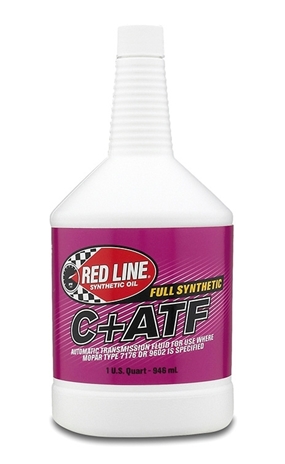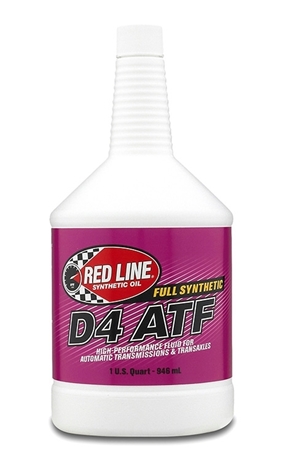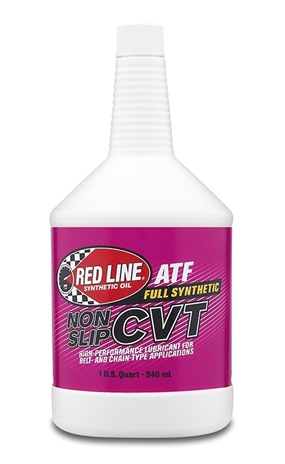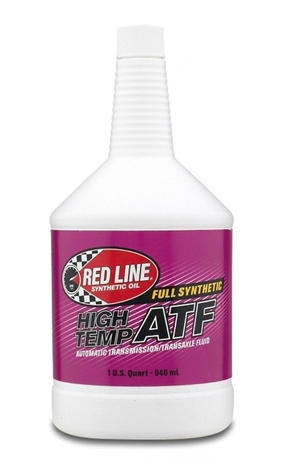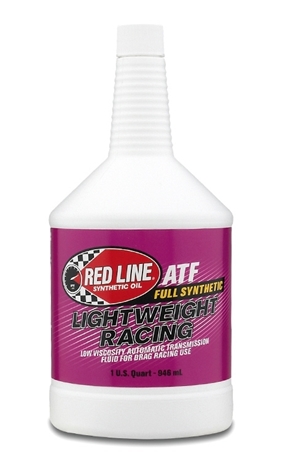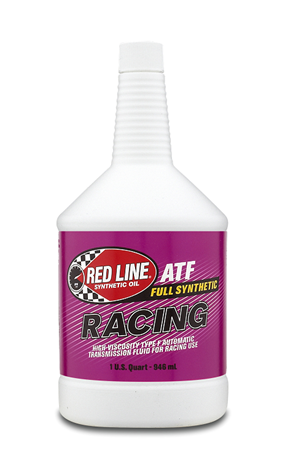REDLINE AUTOMATIC TRANSMISSION FLUIDS
ABOUT RED LINE AUTOMATIC TRANSMISSION FLUIDS
|
|
|
|
|
|
|
|
|
Red Line offers the widest selection of full-synthetic ATF on the market today
· Each offer improved thermal stability, maintain viscosity levels and feature lower volatility while providing the required frictional characteristics of each fluid's OEM-style replacement
· Reduced oxidation and lower volatility at high temperature
· Allows high-temp operation without varnishing valves and clutches
· Extended drain intervals
“Red Line is another "boutique" fluid and additive manufacturer, less widely known but very well regarded among drivers. Red Line's history as a reliable oil for both racing applications and automotive enthusiasts boosts its transmission fluids at the top of our rankings.”
The Role of Automatic Transmission Fluid (ATF) in Vehicle Performance.
The failure of automatic transmission fluids can lead to.
1. Failure to select gears easily.
2. Jerky gear change.
3. Difficulty changing up or down.
4. Transmission overheating warning.
5. Jerking when the gear is moved from park to drive.
The significance of Automatic Transmission Fluid (ATF) in enhancing vehicle performance cannot be overstated. By facilitating smooth gear shifts, ATF contributes to a comfortable driving experience and optimizes fuel efficiency; seamless transitions reduce engine strain, allowing for better performance.
ATF is a critical component in vehicles equipped with automatic transmissions, that ensure operational efficiency. It transmits power from the engine to the gearbox, enabling fluid gear shifts that enhance both vehicle performance and longevity. ATF plays an essential role in cooling and lubricating the moving components within the transmission system, effectively minimizing friction between gears. This reduction in wear and tear can extend the lifespan of the transmission.
Composed of a carefully formulated blend of base oils and additives, ATF is engineered to meet the demanding conditions of a vehicle's transmission system. The base oil constitutes the primary lubricating element, while the added components serve specific purposes. These additives include detergents to maintain the cleanliness of the transmission, anti-wear agents to safeguard the gears, and viscosity modifiers to ensure consistent performance across a range of temperatures.
New automatic transmission fluid (ATF) typically exhibits a transparent red hue, which is an industry standard that distinguishes it from other automotive fluids. This transparency allows for a clear visual assessment of the fluid's condition. As the ATF ages and undergoes wear, its color, clarity, and viscosity may alter, providing essential visual indicators regarding its condition and the appropriate timing for replacement.
WHY USE SYNTHETIC ATF:
LUBRICATION:
Utilizing synthetic transmission fluid in your vehicle offers exceptional lubrication and enhanced protection for the gear system compared to conventional transmission fluid. Formulated for optimal performance, synthetic transmission fluid provides superior lubrication to gears, bearings, and shifting components. Its advanced molecular structure enables superior adherence to metal surfaces, significantly reducing friction and wear. Consequently, users can expect smoother gear transitions, enhanced transmission performance, and a prolonged lifespan of critical components.
VISCOSITY:
Synthetic transmission fluid is distinguished by its lower viscosity compared to traditional transmission fluids. This reduced viscosity confers multiple benefits. Primarily, it minimizes friction within the transmission system, facilitating a smoother operational experience. The improved flow characteristics of synthetic fluid ensure efficient circulation throughout the transmission, guaranteeing comprehensive lubrication of all components.
CORROSION PROTECTION:
Conventional transmission fluid is generally less effective at preventing rust and corrosion, which may compromise the longevity and functionality of your vehicle’s transmission. Synthetic transmission fluid is specifically engineered to offer superior protection against rust and corrosion in metallic components. This is achieved through a unique blend of advanced additives and detergents that cultivate a protective barrier on metal surfaces, effectively shielding them from moisture and corrosive elements. Regular transmission fluids typically lack these specialized additives, resulting in diminished protection against corrosion.
RESISTANCE TO OXIDATIONAND STABILITY:
When comparing synthetic and conventional transmission fluids, a key differentiator is their chemical stability. Synthetic transmission fluids are meticulously formulated through advanced chemical processes, creating a more stable fluid composition. This enhanced stability significantly reduces the likelihood of oxidation, which can lead to the development of harmful acids and sludge within the transmission system. As a result, synthetic fluids are less prone to degradation, even under extreme temperatures and extended service intervals.
Temperature Management
For individuals frequently navigating high-temperature driving conditions, synthetic transmission fluid offers superior protection against overheating and potential damage to transmission components. With a lower viscosity index, synthetic fluids exhibit improved fluidity, enabling them to dissipate heat more efficiently. They are engineered to endure elevated temperatures without breaking down, ensuring that your transmission remains adequately lubricated and protected.
Life Span
In contrast, conventional transmission fluids generally have a shorter operational lifespan, necessitating replacement approximately every 30,000 to 60,000 miles. On the other hand, synthetic transmission fluids, formulated with advanced molecular structures, provide exceptional resistance to heat and oxidation. Consequently, synthetic fluids can maintain their performance and protective qualities for significantly longer durations, typically ranging from 60,000 to over 100,000 miles.
Classic Cars: A Comparative Analysis of Synthetic versus Regular Transmission Fluid
When evaluating transmission fluids for classic cars, the advantages of synthetic automatic transmission fluid (ATF) over conventional varieties become evident. Synthetic ATF is specifically engineered to deliver superior lubrication and minimize friction, resulting in smoother gear transitions and enhanced power transfer. This improvement can lead to better acceleration and overall vehicle performance.
Synthetic ATF exhibits a higher resistance to heat, which is particularly beneficial for classic vehicles equipped with older transmission systems that may operate at elevated temperatures. The exceptional thermal stability of synthetic ATF ensures that it retains its properties and performance even under extreme conditions.
In contrast, regular ATF typically contains paraffin-based additives, which can lead to the accumulation of deposits and varnish on critical transmission components over time. This buildup can compromise transmission efficiency and negatively affect the overall performance of classic cars.
.

